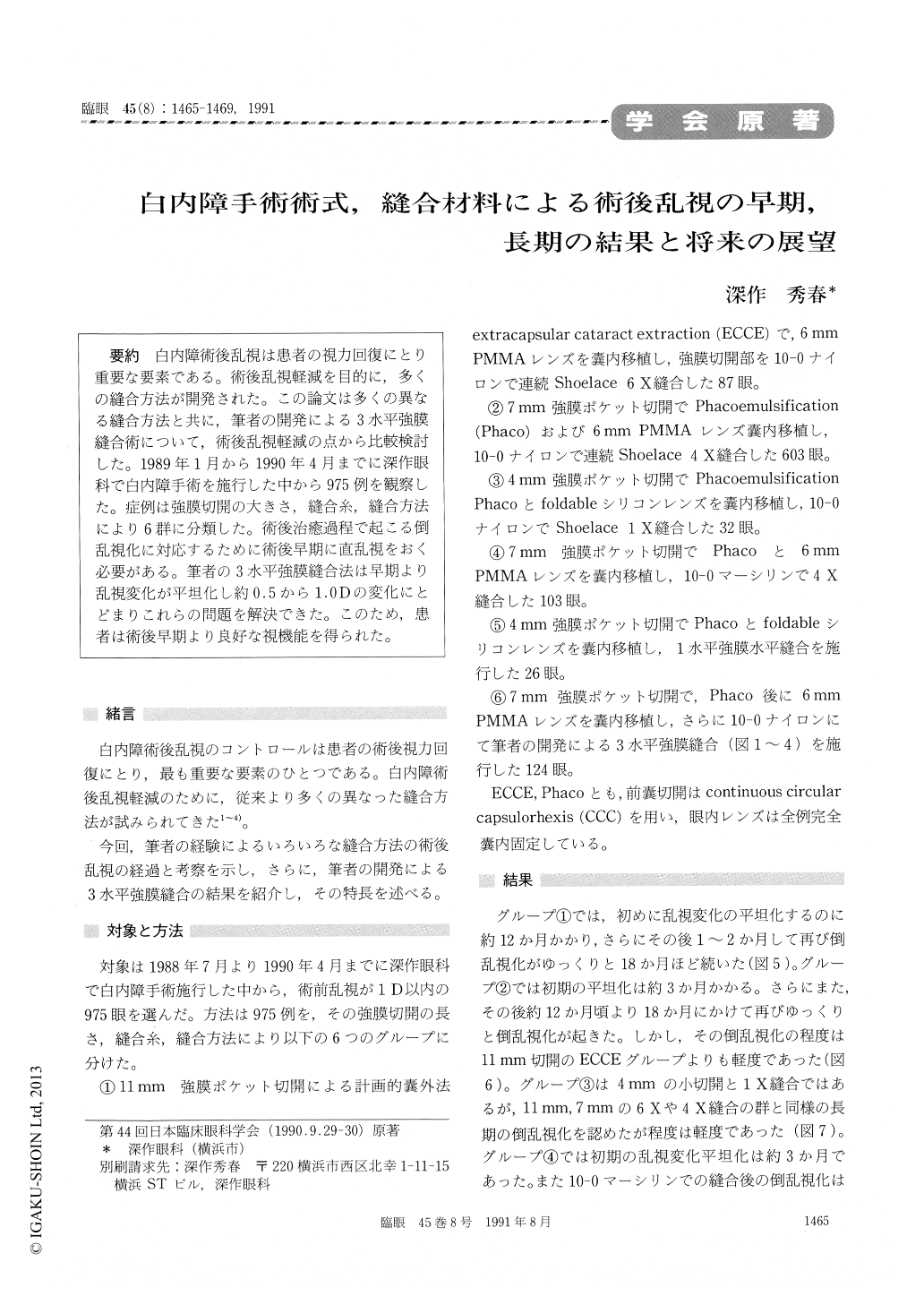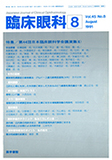Japanese
English
- 有料閲覧
- Abstract 文献概要
- 1ページ目 Look Inside
白内障術後乱視は患者の視力回復にとり重要な要素である。術後乱視軽減を目的に,多くの縫合方法が開発された。この論文は多くの異なる縫合方法と共に,筆者の開発による3水平強膜縫合術について,術後乱視軽減の点から比較検討した。1989年1月から1990年4月までに深作眼科で白内障手術を施行した中から975例を観察した。症例は強膜切開の大きさ,縫合糸,縫合方法により6群に分類した。術後治癒過程で起こる倒乱視化に対応するために術後早期に直乱視をおく必要がある。筆者の3水平強膜縫合法は早期より乱視変化が平坦化し約0.5から1.0Dの変化にとどまりこれらの問題を解決できた。このため,患者は術後早期より良好な視機能を得られた。
Control of post operative astigmatism is the most important factor in visual rehabilitation of the patient. Many different suturing techniques have been used to try to minimize the amount of the astigmatism after cataract surgery. The following paper compares the effectiveness of the author's Tri Loop Horizontal Suture to various other sutur-ing techniques in decreasing post operative astig-matism. From July 1988 to April 1990, 975 patients have been operated and followed in the Fukasaku Eye Center. They were divided into 6 differentgroups according to the scleral incision, suturing materials and methods. A sufficient amount of with -the-rule cylinder has to be induced at the time of surgery in order to counter the against-the-rule cylinder which occurs during the healing process. The Fukasaku Tri Loop Horizontal Suture effec-tively eliminates these problems as only 0.5 to 1.0 dioptors of cylinder has to be induced at surgery. The end result is a residual plus or minus half dioptor of astigmatism. Most important suture decay is less and the patients has useful visual acuity in the early post operative period.

Copyright © 1991, Igaku-Shoin Ltd. All rights reserved.


